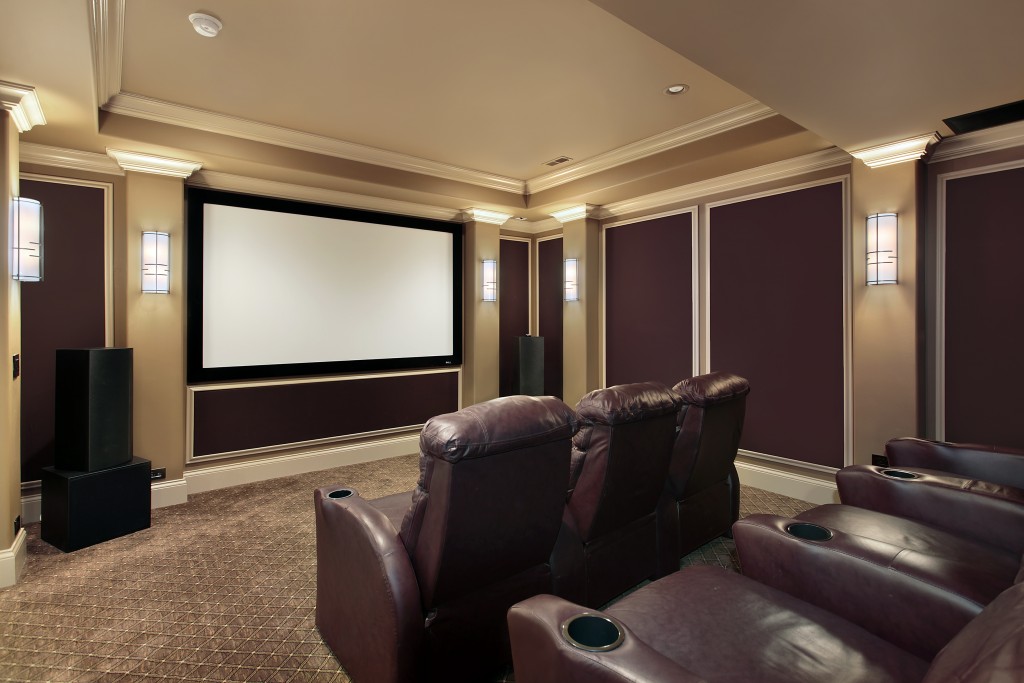With people being advised to stay at home because of the pandemic, now is the best time to invest in your ultimate in-home entertainment system. If staying at home means saving lives, it is the perfect excuse to enjoy a movie or two with your family. If you want to make the experience even more extraordinary, invest in a state-of-the-art home theater system.
Of all the components of your home theater system, the TV can make the most significant difference. Imagine having the best soundbars, speakers, and projectors, and Control4 system. It’s like having a Ferrari running at 35 mph, max.
What is a 4K TV?
A 4K TV is a TV set that has a 4K resolution. This means that it has 3,840 horizontal pixels and 2,160 vertical pixels. Resolution refers to how densely the pixels are put together in your TV’s display. These pixels collect together to form the images that you see on the screen. The higher the pixel count, the higher the resolution, and the more defined the image.
A 4K TV has four times more pixels than your regular HD TV. This gives a more vivid and detailed image, with high contrast, giving you a more immersive experience when watching your favorite movies and TV series.
What should you look for in your home TV?
Here are the things that you should look into when buying a TV for your home theater system. There might be other considerations that are important to you (such as brand if you are brand conscious). But these points will generally give you a guide on how to score the best 4K TV.
- Look for TV’s with a 60Hz or 120Hz refresh rate. A higher refresh rate means smoother transition motion, which can have a difference for movies and live sports games.
- Look for a TV with at least 4 HDMI ports. The newer the HDMI version, the better.
- Get an HDR-compatible TV set.
- Choose a TV size of at least 55 inches.
What Is the Difference between QLED and OLED TVs?
You might have seen TV sets touted as QLED and OLED. Both sound almost the same. The names at a single glance also look the same. But the difference in the first letters means a whole lot of differences between the two technologies.
What is OLED technology?
OLED stands for Organic Light-Emitting Diode. The name refers to the kind of panel that is used to display the images in your TV set. OLED technology is not only used in TV sets, but high-end smartphones such as the iPhone 11 Pro also use it.
OLED TV has better contrast, color accuracy, and black levels compared with LED TV. They also emit lesser blue light than LED TV, so it is safer for your eyes.
The organic in its name is for the carbon film that’s inside the panel before your TV’s glass screen. When an electric current passes through the OLED panels emit light. It is the pixels themselves that emit the light, and they just turn off when they need to be black. OLED TV screens give you more vibrant images.
OLED TV’s are also a favorite among gamers because of their responsiveness and smoothness. The popular brands that offer OLED TVs are LG, Philips, and Sony.
What is QLED technology?
QLED stands for Quantum-Dot Light Emitting Diode. Unlike OLED, QLED uses a separate backlight, like the regular LCD TV. QLED uses a quantum dot filter and an aluminum compound that helps make the dot more effective at passing light through, producing more accurate colors.
Dot filter is a film or tiny semiconductor that can be controlled to produce certain colors. Dot filters replaced the RGB filters that older TV sets used.
Brands that adopted the QLED technology are Samsung, TCL, and Hisense. QLED is almost synonymous with its developer Samsung.
Comparison of OLED and QLED

Now that you know what each name stands for and how they work, let us compare the two technologies based on specific parameters.
Contrast
OLED wins this one because it has better black levels.
Brightness
QLED reigns in this category because of its separate backlight.
Color Quality
It is a draw. OLED delivers better contrast and fantastic black levels, while QLED delivers fantastic colors.
Response Time
OLED wins this round with a response rate of 0.1 milliseconds. QLED does not even come close at 2 to 8 milliseconds.
Viewing angle
OLED wins this category, simply because you can see no distortion in the picture or degradation in colors even at drastic viewing angles. With QLED, on the other hand, the best viewpoint is at its center.
Size
This round goes to QLED. QLED TVs cost less to produce at bigger sizes compared to OLED.
Both technologies have pros and cons. There are other ways to compare the two, such as price and service life. You can’t go wrong with either technology. You can use either technology for your state of the art home theater system. The choice will still be yours.












